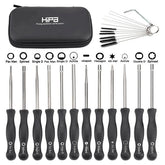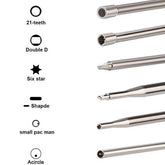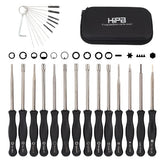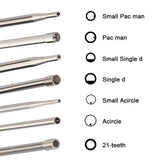Step-by-Step Carburetor Replacement on Generators
Does your generator not run properly? Or not rev up to proper RPMs(rotate per minute), and even you can not start it at all. There may be something wrong with the carburetor. Here is a step-by-step instruction for carburetor replacement on generators.
Preparation
Before starting, you are supposed to prepare some basic tools:
1.A ratchet
2.A 10 millimeter socket or an 8 millimeter socket
3.A pair of pliers
Put Off the Old Carburetor
Step 1: Take off the air filter including the metal shroud.
Step 2: Turn the fuel valve to the off position.
Step 3: You need a container underneath the drain bolt to hold the flowing fuel from the carburetor.
Step 4: Put the drain bolt off.
Step 5: After it has drained out, put the drain bolt back on.
Step 6: Remove the fuel line connected with the carburetor.
Step 7: Pull the carburetor back to loosen it.
Step 8: Remove the linkage from the carburetor.
Now you can take off the carburetor easily and do not forget to remove the chock knob from the old carb.
Installation
Actually, the carburetor replacement does not just refer to the carburetor part replacement, it also includes other parts like the gasket, fuel line and so on. Sometimes you may replace the air filter by the way. So you need a comprehensive carburetor repair kit.
Step 1: Put a gasket in its position and push it to the plastic adapter.
A small tip before you install your new carburetor: it is better to make sure the bolts on the bottom of the carb are a little tight.
Step 2: Insert your new carb and reconnect the linkage.
Step 3: Install the spring in the small hole on the plastic part.
Step 4: Push the carb up to the manifold.
Step 5: Recheck the linkage and the spring are hooked up well.
Step 6: Rehook the fuel line and reinstall the hose clamp.
Step 7: Turn on the fuel valve and leave it for a few minutes to make sure there is no leak.
Step 8: Reinstall the chock knob, another gasket, the metal shroud and the air filter.
Step 9: Put the choke on and make sure the valve is in the open position, and try to start it.
It is also important to test your equipment after installing a new carburetor. You can add some fuel stabilizer to control moisture and ethanol in your fuel, making your new carb more reliable and durable.
Please let us know if this works and if you have any suggestions or comments. Or you can join us to feature your passion for repair projects, share your stories with the Hipa family, and get help from Hipa.




















